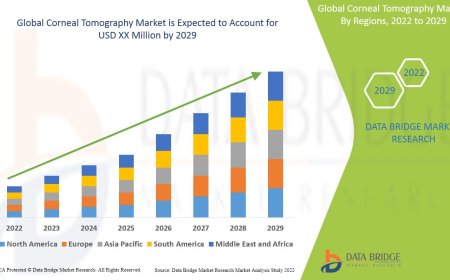What You Should Know Before Applying for Development Finance?
Before applying for development finance, know the key requirements, budgeting tips, and lender expectations for successful project funding.

Taking on a property development project-whether it's building from the ground up or converting an existing structure-can be highly rewarding. However, one of the most critical aspects of such ventures is securing the right funding. Development finance is a specialized form of lending designed for these projects, offering tailored capital for construction and refurbishment efforts. But getting approved is not as straightforward as applying for a standard mortgage or business loan. It requires careful planning, detailed documentation, and a deep understanding of how these loans work.
In this guide, well break down the essential things you should know before applying, so you can approach lenders with confidence and clarity.
1. Understand the Scope of Your Project
Before approaching any lender, you need a full grasp of your developments size, complexity, and financial demands. Are you undertaking a ground-up build, a heavy refurbishment, or a conversion? Different types of projects have different risk profiles and funding requirements.
Lenders will want to understand:
- The type of property youre developing (residential, commercial, mixed-use)
- The number of units involved
- Whether you have planning permission in place
- The estimated time required to complete the build
If youre still at the conceptual stage, its worth finalizing architectural plans and obtaining planning approvals before seeking finance. Having a fully fleshed-out project plan not only improves your chances of approval but may also lead to more favourable lending terms.
2. Know the Difference Between Gross and Net Loan Amounts
One key distinction in property development lending is between the gross loan amount (the full facility provided by the lender) and the net loan amount (the funds you actually receive upfront). Because many loans in this category are structured in stages, the full amount is not typically paid out all at once.
In most cases, the loan is divided into two parts:
- Land or property acquisition cost
- Construction costs (usually released in tranches)
Each drawdown is tied to a valuation report confirming that the corresponding work has been completed. Its important to factor this into your cash flow forecasts and ensure you have sufficient working capital to begin the project until the first tranche is released.
Additionally, remember that lenders may deduct fees, interest, or retention amounts from the gross loan-so always clarify how much will actually hit your account at each stage.
3. Have a Realistic Budget and Exit Strategy
Lenders will expect a well-prepared development appraisal, including a detailed breakdown of:
- Land or purchase price
- Build costs
- Professional fees (architects, legal, planning consultants)
- Finance costs (interest, arrangement fees, valuation fees)
- Marketing or sales costs (if selling units)
- Contingency allowance (typically 1015%)
Equally important is your exit strategy-how you plan to repay the loan. For residential projects, the common options are:
- Sale of the completed units (to repay the loan in full)
- Refinancing onto a long-term buy-to-let or commercial mortgage
Lenders assess the viability of your exit plan alongside the projects financials. If your strategy is to sell, theyll look at the local market and demand. If refinancing, they may examine rental yield, occupancy potential, and your long-term financial stability.
4. Experience Matters-So Highlight Yours
While its not impossible for first-time developers to get approved, lenders are significantly more comfortable working with experienced professionals. Your track record helps to de-risk the loan in their eyes.
When applying, be ready to present a development CV showing:
- Past projects (size, cost, duration, outcomes)
- References or testimonials
- Partnerships with reliable builders or contractors
- Relevant qualifications or licenses
If you're new to development, consider partnering with a more experienced co-developer or bringing on a project manager with a solid reputation. The strength of your team can influence lender decisions just as much as your business plan.
5. Choose the Right Lender and Work with Experts
Not all lenders operate in the same space. Some focus on large-scale developments, others prefer small residential projects. Some are regulated banks with stringent criteria; others are private or specialist lenders who may offer more flexibility.
Shopping around can be time-consuming and confusing, especially if youre unfamiliar with the industrys terminology and documentation standards. Thats why many developers turn to professional brokers who can match them with the right lender based on the projects specifics.
Heres what to look for in a lender or funding partner:
- A history of funding similar project types
- Transparent fee structures and interest rates
- Flexibility in loan-to-cost or loan-to-GDV ratios
- Responsive communication and clear documentation requirements
- Support with legal, valuation, and drawdown procedures
Working with the right lender from the beginning can save weeks of back-and-forth and significantly improve your projects success rate.
6. Expect Detailed Due Diligence
Due diligence is rigorous in the world of development finance. Lenders are taking on higher risk compared to traditional mortgage loans, and they will scrutinize every detail of your proposal.
Prepare to provide:
- Full planning consent documentation
- A professional cost breakdown (often from a quantity surveyor)
- Proof of own funds or equity contribution
- Company accounts or personal financial statements
- Site acquisition contracts
- Structural surveys and site reports (if applicable)
- Development timeline and Gantt chart
The more comprehensive and organized your documentation, the faster the approval process is likely to be.
7. Monitor the Market and Factor in Contingencies
While funding is essential, the broader market conditions can heavily impact the outcome of your project. Pay attention to:
- Interest rate fluctuations (which affect borrowing costs)
- Material and labour shortages (which can delay projects)
- Planning policy changes or zoning restrictions
- Shifts in local demand (especially if your exit is sale-based)
Always include contingency plans-both in terms of time and cost. A 10% buffer on costs and at least a 3-month margin on timeline projections are considered best practice. These precautions help keep the project viable even when unexpected issues arise.
Conclusion
Applying for development finance is a sophisticated process that requires more than just a compelling idea-it demands detailed planning, clear documentation, and an understanding of what lenders expect. From project budgeting and timelines to exit strategies and contractor partnerships, every element plays a role in securing approval and completing a successful build.
Whether youre an experienced developer or new to the game, the key lies in preparation and knowing where to seek the right advice. Dont underestimate the importance of working with professionals who understand the lending landscape and can advocate on your behalf.
At Mayfair Commercial Mortgages, we specialize in guiding developers through the finance process from start to finish. Our team works with a broad panel of lenders and tailors funding solutions to meet each project's unique demands. If you're planning a new development and want expert support every step of the way, we're here to help you build with confidence.


































